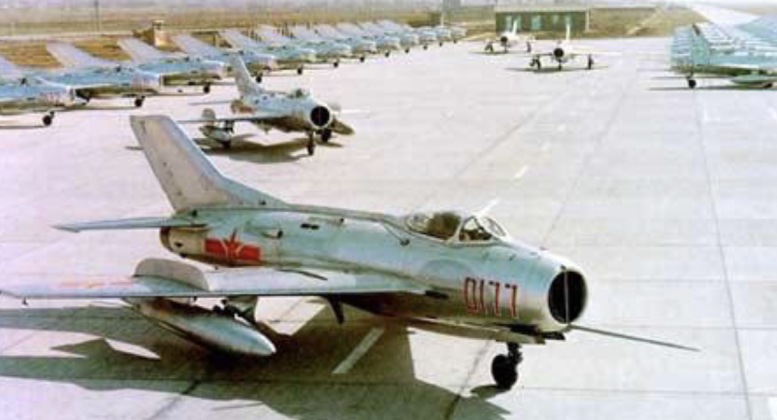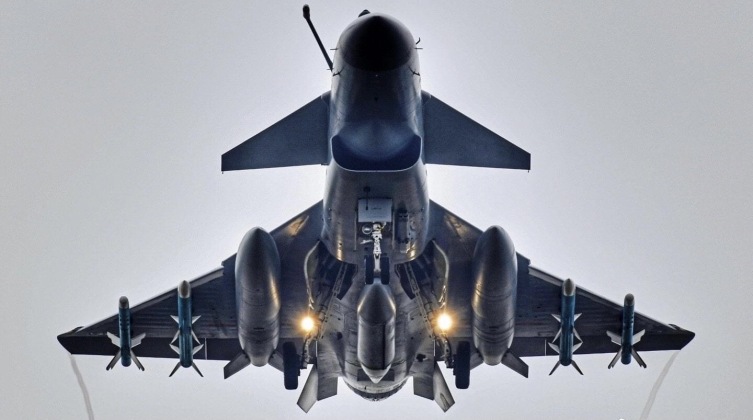News
China’s J-10 Fighter First Flew 25 Years Ago: This Was the Dragon’s Key Role in the Air Force’s Ascent

The Chengdu J-10 fighter has for over close to 20 years played a central role in the modernisation of the Chinese People’s Liberation Army (PLA) Air Force, and having first flown on March 23 1998 it has now been flying for a full quarter century. With approximately 50 estimated to be being produced annually after acquisitions were accelerated in the late 2010s there are now close to 600 in service the Chinese fleet. Unofficially named the Vigerous Dragon, the aircraft is today in production in greater numbers than any other fighter class in the world aside from the American F-35. Entering service in 2004 the J-10 was not only the first fourth generation fighter to be developed indigenously in China, but also the most fully indigenous fighter in the country’s history. Its development marked an important milestone in China’s emergence from the Cold War era of very limited combat aviation capabilities into a world leader in the field, with the country’s first fifth generation fighter the J-20 entering service just 13 years after it.
During the Cold War China’s fleet had relied almost exclusively on Soviet aircraft, first MiG-9 and MiG-15s delivered from the USSR and used in the Korean War, then license produced MiG-17 and MiG-19 fighters produced as the J-5 and J-6. The break in relations with Moscow lead China’s aviation industry to the reverse engineer the Soviet MiG-21 – a protracted and troubled effort which produced the J-7 aircraft largely for export. As a result even by the 1990s heavily enhanced MiG-19 derivatives formed the large majority of the fleet, with these aircraft being largely obsolete particularly compared to top end Soviet and American fighters such as the Su-27 and F-14. Although China moved past dependance on with late 1950s Soviet aircraft designs in 1991, when it imported its first foreign-built fighters in decades in the form of Soviet fourth generation Su-27s, followed by more advanced Russian Su-30s near the end of the decade, its domestic aviation industry still remained very far behind. The J-10 program was thus key to bringing Chinese industry up to a fourth generation level, and leveraged experience gained in the 1990s license producing Su-27s increasingly independently. The J-10’s entry into serial production thus closely coincided with a complete phasing out of Russian inputs in the Su-27’s avionics suite and airframe on Chinese production lines, with the locally built Soviet designed aircraft designated J-11 and serving as a heavier counterpart to the J-10.

Although the Su-27 was when purchased widely considered the most capable fighter in the world, it was a twin engine heavyweight aircraft optimised to high end air superiority missions and thus could only replace a fraction of the PLA’s much lower maintenance and lighter J-6 and J-7 fighters. The J-10 by contrast was a relatively light single engine fighter with a much lower endurance and smaller sensor suite, which had the benefits of being far easier to maintain and cheaper to operate than the Su-27 and thus viable for large scale acquisitions. The J-11 J-10 pairing thus mirrored that between the American F-15 and F-16. Although the J-10 proved overwhelmingly more capable than the fighters it was replacing, the baseline J-10A variant was still a relatively basic fourth generation aircraft comparable to the American F-16C/D Block 52, with a 100km air to air engagement range and reliance on a mechanically scanned radar. The J-10B produced in small numbers in the early-mid 2010s provided significant improvements including integration of a passive electronically scanned array radar, while the J-10C took the design to what is considered its peak performance and throughly revolutionised its capabilities.

The J-10C was commissioned a year after the J-20 fifth generation fighter, and integrated truly fifth generation level avionics and weaponry including the PL-10 infrared guided air to air missile and the PL-15 AESA radar guided long range air to air missile. These features have made it a leading challenger in air to air combat even against opponents twice its size such as the American F-15 and Russian Su-35, with the J-10C seen to potentially hold an edge over both and comfortably outperforming the Su-35 in simulated combat. Among single engine fighters it is very significantly less costly than its closest rival the F-35 particularly in terms of its lifetime operational expenses and weighs little over half as much. Although lacking the F-35’s advanced stealth capabilities it has significant advantages in its weaponry, availability rates, and all aspects of its flight performance and a comparable performance in terms of avionics.
Despite the large numbers in which it has been acquired, the J-10C nevertheless plays a far less central role in the Chinese fleet than the F-35 does in the United States due to the PLA’s greater focus on very high endurance heavyweight fighters, with the majority of acquisitions being much larger J-20s and J-16s – the latter a very heavily enhanced Su-27 derivative. Large scale J-10C production has allowed the PLA Air Force to bring more squadrons up to a cutting edge level quickly without significantly increasing their operational expenses or lowering their availability rates, providing an optimal replacement for J-7s still in service. This is something no other single engine fighter of its era has achieved, with the F-35 having in most cases fallen short with 800 performance defects remaining, combat readiness rates remaining very low and major cuts to acquisitions expected as full scale production continues to be delayed. The J-10’s development thus not only marked a major landmark for China’s aviation industry and a critical stepping stone to fielding the J-20, but also evolved into what is arguably the most successful single engine fighter program of the 21st century.












